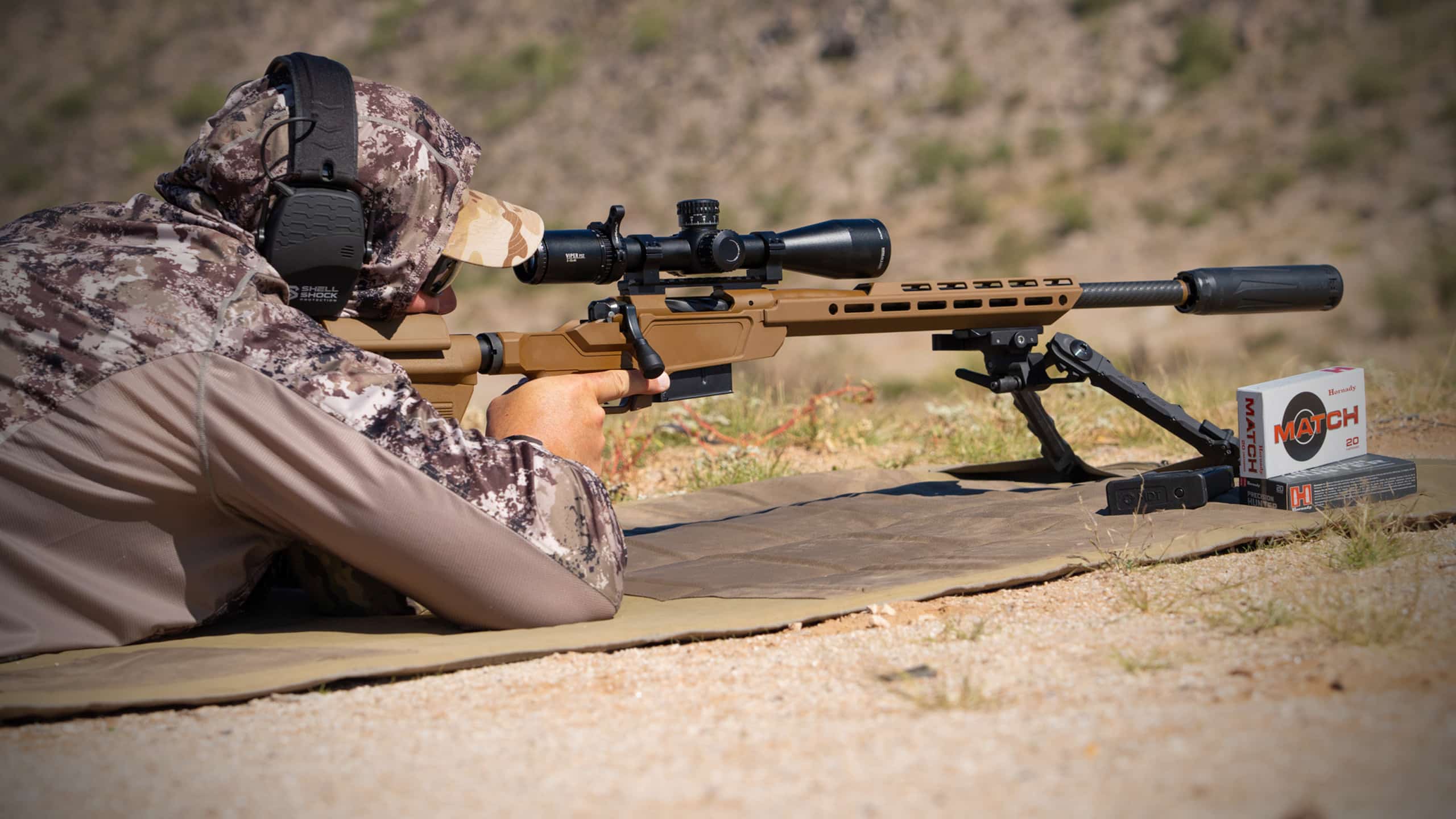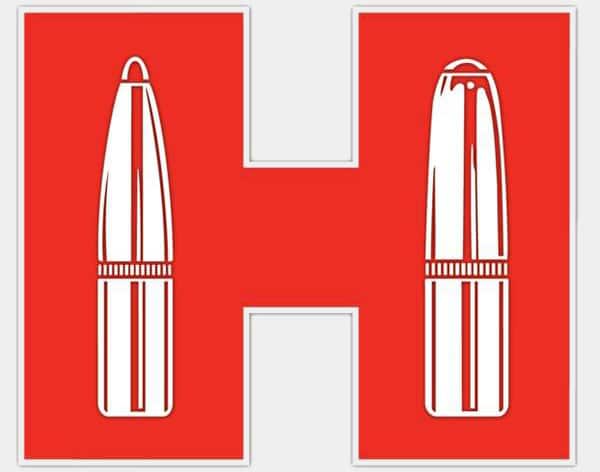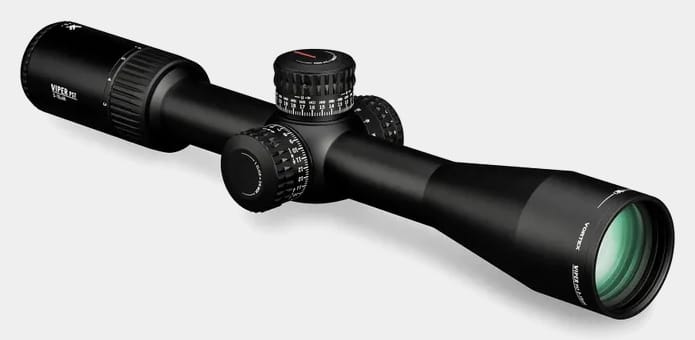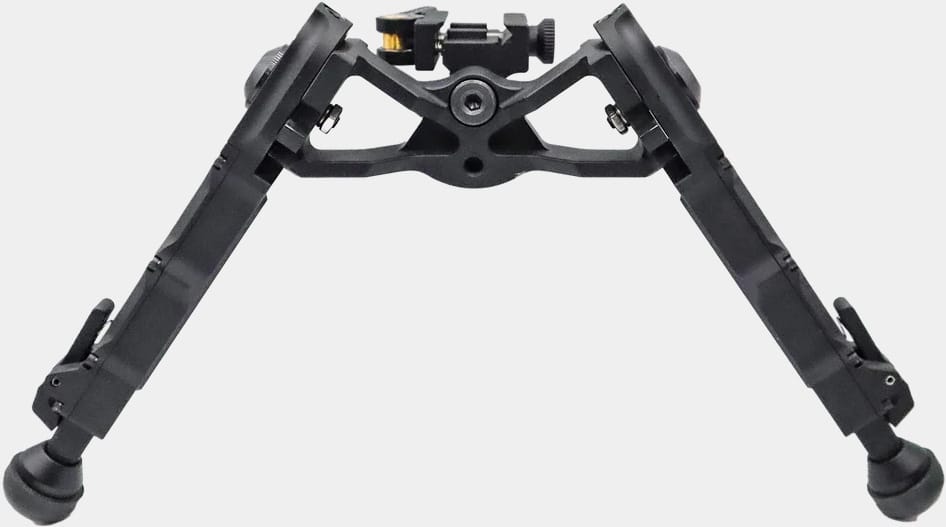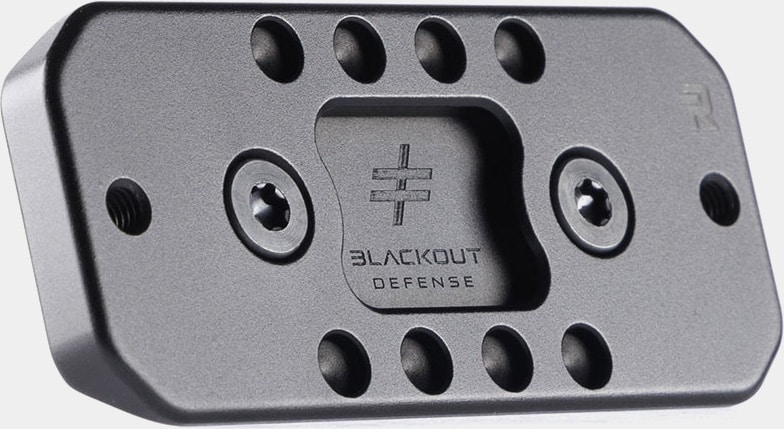In today’s article, Michael Mills spends time with a new Heatseeker rifle option in Springfield Armory’s Model 2020 lineup. The gun is a beauty and Mills achieved some impressive groups with Hornady ammo. The rifle shot in this article was loaned to Mills by the company.
Recently, on a beautiful 65˚ morning in the tranquil Arizona Sonoran Desert, I had an experience that will stick with me for the foreseeable future. This day started off with an hour-long drive followed by a quick range set up to test my new Springfield Armory Model 2020 Heatseeker — one of three new models launching today. The next two hours left me with a feeling of achievement and a big smile on my face.
[Also check out Sean Utley’s review of the original Springfield Model 2020 Heatseeker.]
The Model 2020 family of centerfire rifles has been well proven over the past several years with its .75 MOA guarantee. This is the type of performance any hunter or precision match shooter dreams of out of a rifle that you don’t have to custom build or spend ridiculous amounts of money on.
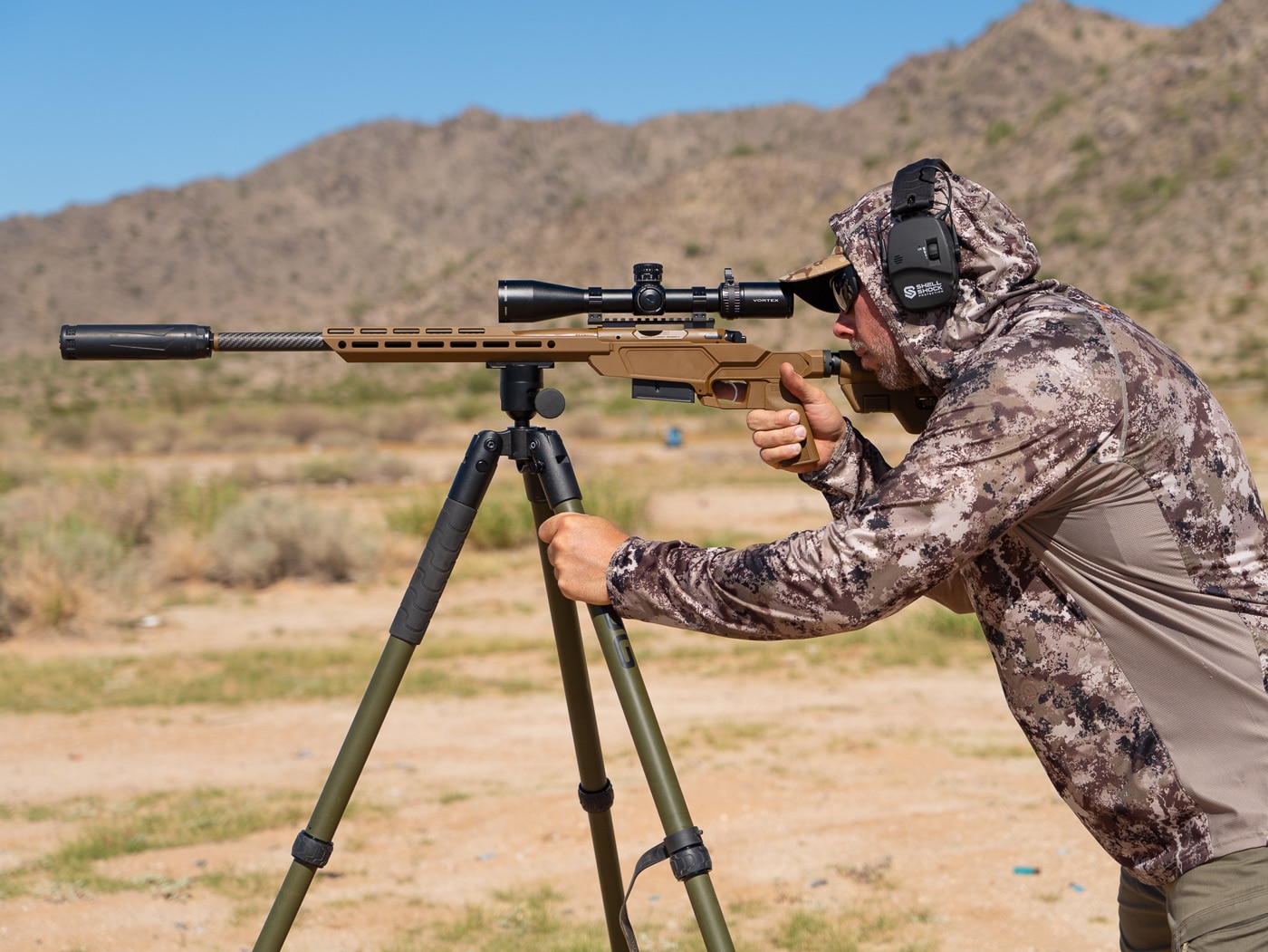
Earlier this year, Springfield introduced the Model 2020 Heatseeker, a chassis variant of this proven system. The first iteration of the Heatseeker was with a 16” carbon fiber barrel in either .308 or 6.5 Creedmoor (CM). Imagine getting a 16” chassis rifle that still gives .75 MOA in those calibers. Pretty crazy, right?
Next-Gen Performance
I think we all knew Springfield Armory was not going to stop there, and I’m happy they did not. Now, the Model 2020 Heatseeker is available in two additional barrel lengths. These are 20” and 22” with caliber offerings in both .308 and 6.5 CM. The 6.5 is offered in both 20” and 22”, while the .308 is a 20”. These are in addition to the previously released 16” guns in both chamberings.
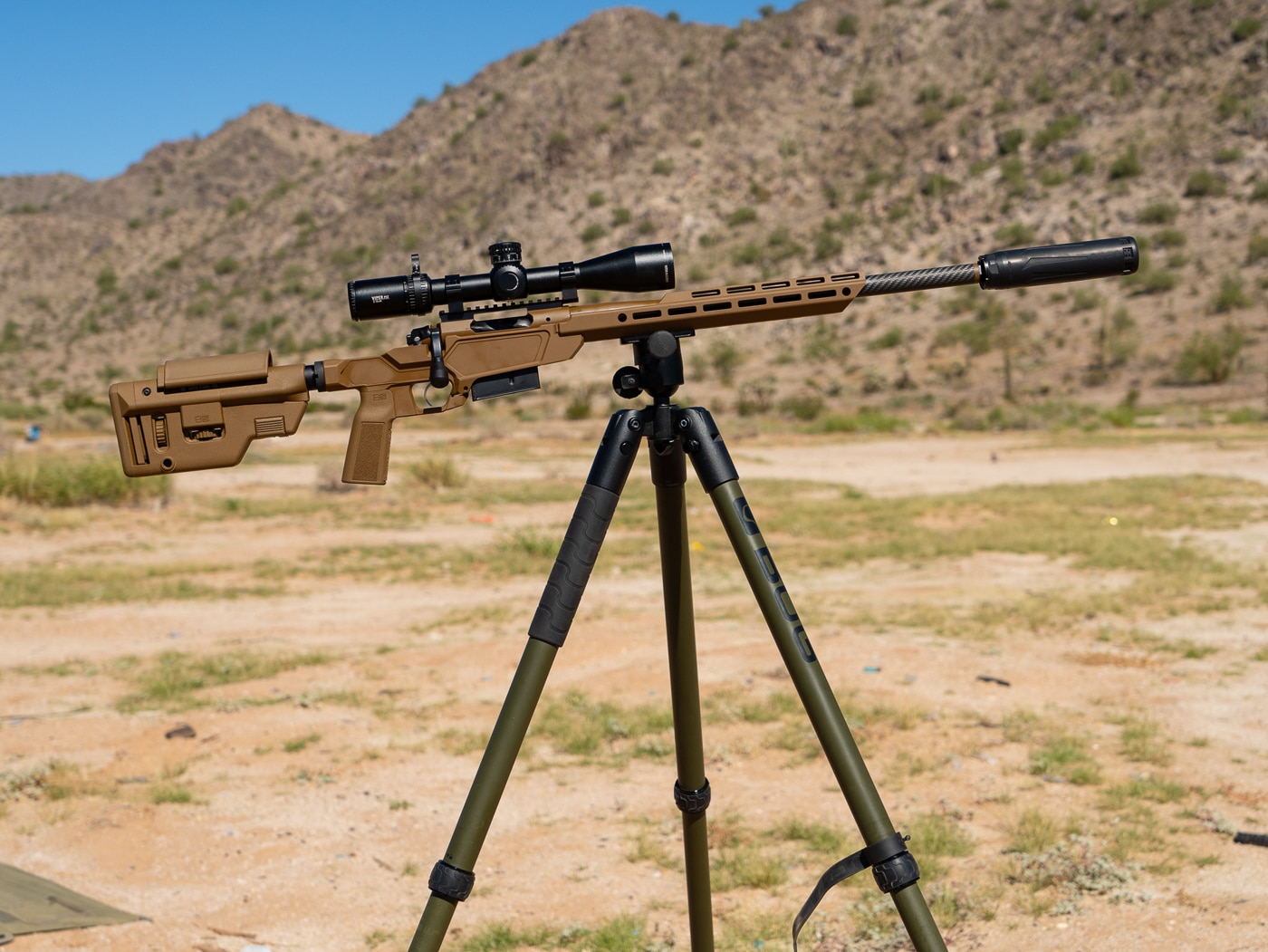
All of these new models will still have the impressive carbon fiber barrel with the same accuracy guarantee as the originals. However, when stepping into the 20” or 22”, you can achieve even better performance with your ammunition. Those few extra inches of barrel in both calibers will net higher velocities and need less adjustment at longer targets.
[Read Wayne van Zwoll’s article if you want to learn more about the 6.5 Creedmoor.]
When my rifle came in, I was like a kid on Christmas morning. I pulled it out of the box and immediately began to inspect every inch of it. I knew from previous experience when I inserted the spiral fluted bolt into the action it was going to be very smooth and lock up extremely tight. I could not help but be drawn to the rich Coyote Brown Cerakote, which looks amazing in the Arizona Desert wilderness. The carbon fiber barrel behind the Sharps Bros. chassis gave it that perfect amount of contrast.
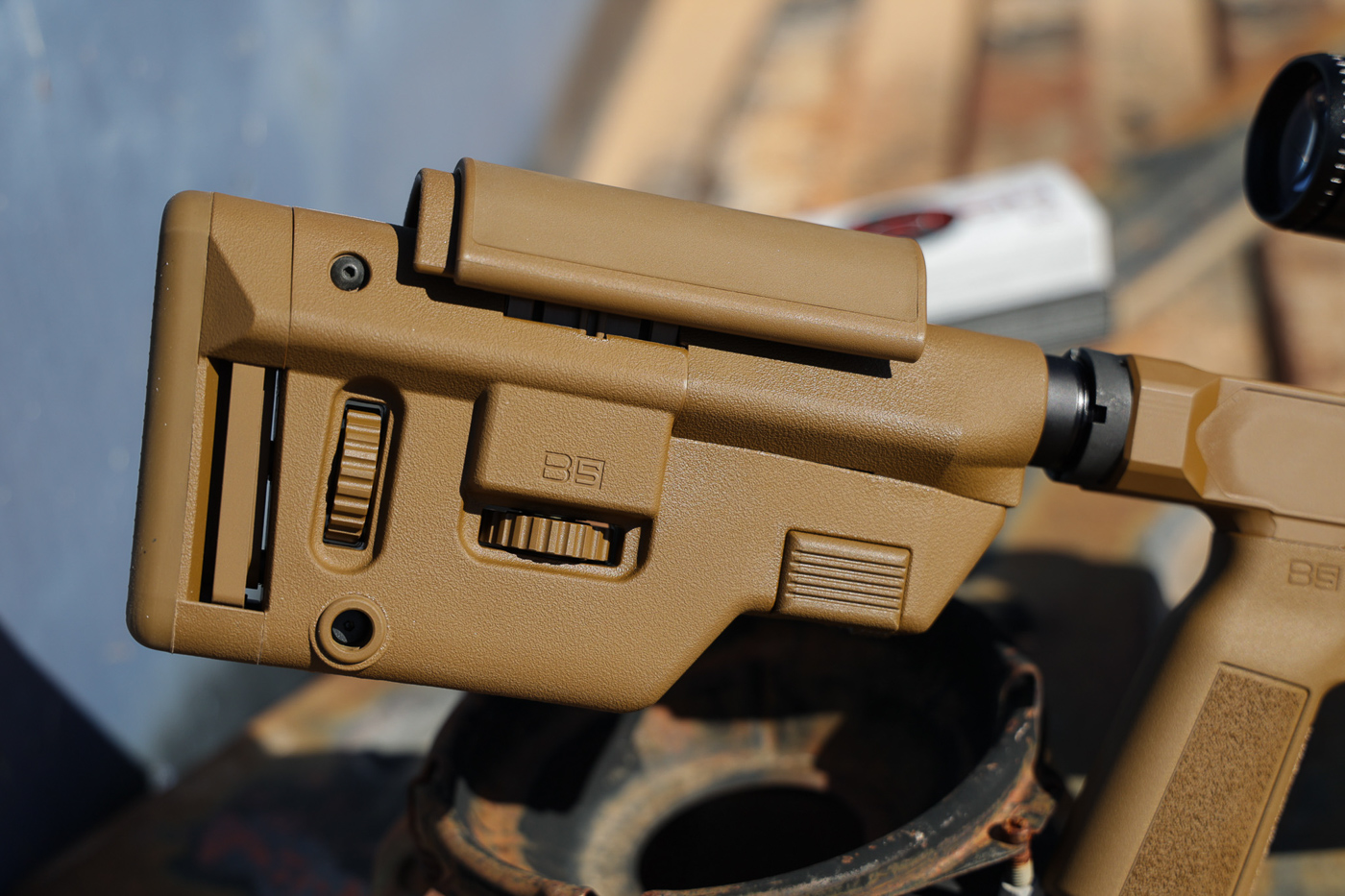
Holding the rifle It just felt solid all the way around. The B5 Systems Precision Collapsible Precision Stock is one of my personal favorites. I have it on two of my precision rifles. These stocks are extremely solid on the buffer tube and make full use of the buffer tube adjustments while still giving micro adjustments via a dial wheel for comb height and length of pull. And of course, the AR-pattern B5 P-Grip 23 is a classic in the AR-15 world. And yes, as you can tell by looking at the rifle, the chassis was built to accept standard AR-15 butter tubes and grips.
The Sharps Bros. chassis appeared to be meticulously machined. The M-Lok rail gave an almost monolithic appearance to the main section. I thought to myself, “How is this chassis made of 6061-t6 aluminum at only 1 pound and 3 ounces?”. The ambi magazine release seemed to match every line of the chassis while being very easy to activate from either side. An included AICS-pattern five-round metal magazine fit perfectly with a no drag insertion and drop to it.
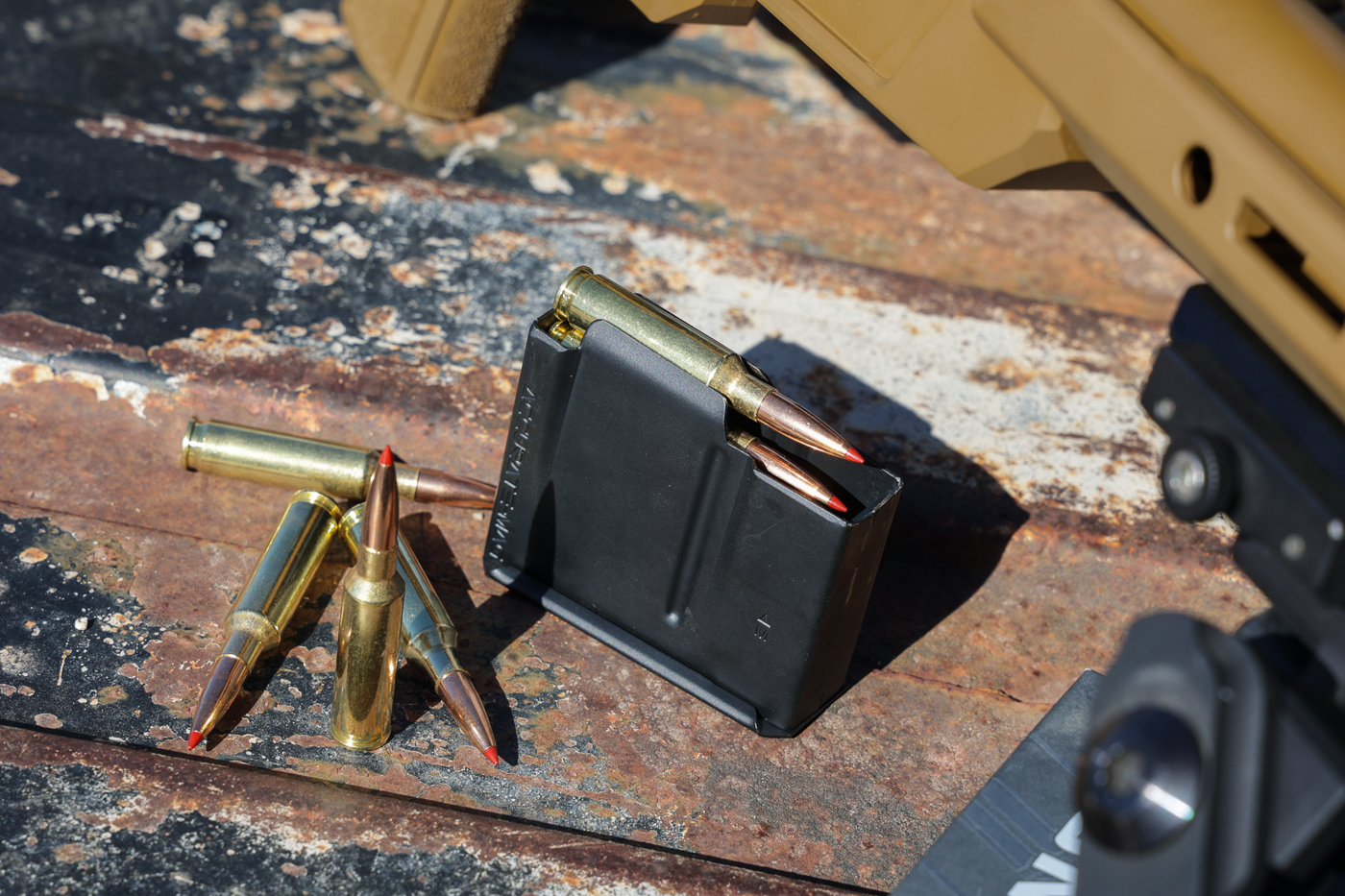
The quality just seemed to be above its price point (which is $2,355 for all variants, by the way). I ran the bolt one more time and felt the smoothness of the action with the magazine installed. I just wanted to see how smooth the EDM wire cut raceways were and, of course, that final locking of the spiral-fluted dual lug 4140 nitrided bolt. I had a grin looking at the included Picatinny rail on top with dual recoil pins.
Outfitting for Performance
I decided to turn to an old favorite for the scope — the tried-and-true Vortex Optics Viper PST in 3-15×44. For the reticle, I chose the first focal plane EBR-7C MRAD. This optic is not only one of the best values in the market for its clarity and consistency, but the reticle design basically negates the need to do any dialing of the turrets. It is as simple as knowing distance, calling wind and then hold on reticle before breaking the shot. Always remember, the right scope on top of your precision rifle can make or break performance.
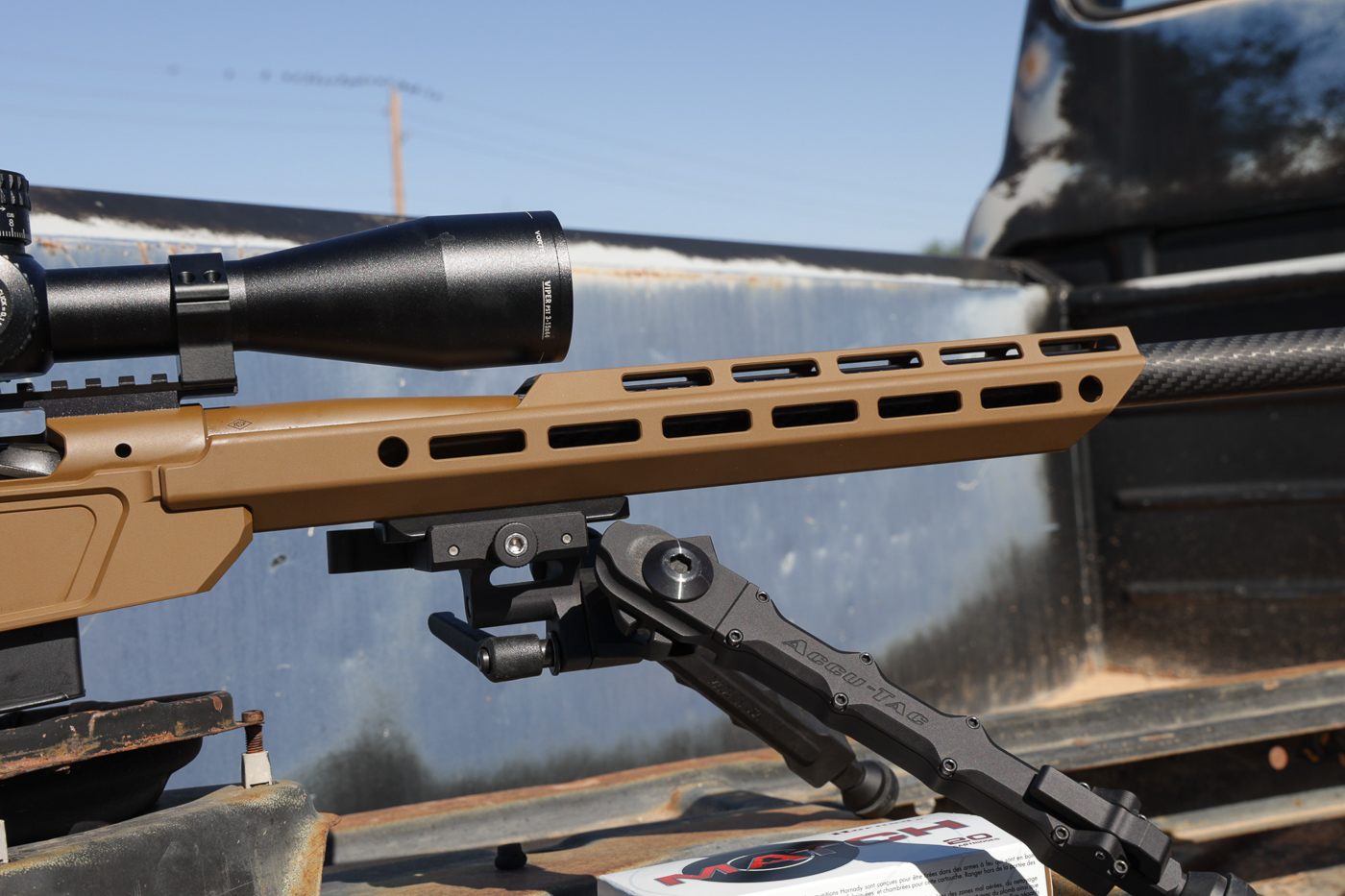
Since I am a bit of a taller and bigger guy, I generally enjoy a higher bipod when shooting prone. For this the choice was obvious — my Accu-Tac WB-04 bipod. It gives a bit of a wider stance but also some additional height when needed. And quite honestly, they just look cool and fit the rifle all while giving a very stable platform and strength when you load your body into the rifle.
On the muzzle end Springfield includes a color-matched thread protector, which is a very nice touch. And since it’s a 5/8×24 standard thread pitch my can was going to make a perfect match for the carbon fiber barrel.
Always Feed It a Healthy Diet
Ammo choice is paramount when it comes to a precision rifle of any kind — hunting or match. While some barrels may like one load over another, in my experience Hornady Match ammo just seems to give unmatched performance out of the box. I chose to run 140-gr. Hornady ELD Match and Hornady 143-gr. ELD-X Precision Hunter ammunition. I have used both of these a lot and, for my personal 6.5 CM hunting rifles, I choose the 143-gr ELD-X. With the 20” barrel having a 1 in 8” twist rate, I figured my results were going to be very good with these two loads.
Made My Day
After a quick zero it was time to lay down some groups. I let the rifle cool down and started off with the Hornady 140-gr. ELD Match. This is where some people say to remove the cold bore shot and others say to include the cold bore shot. I want you to know both because cold bore shots matter when you are hunting and competing. But your consistency is always in the core group after a cold bore or fouling shot. All rounds were fired with the suppressor from the prone and no rest or led sled was used. A five-shot group was fired, including the cold bore for each string of fire.
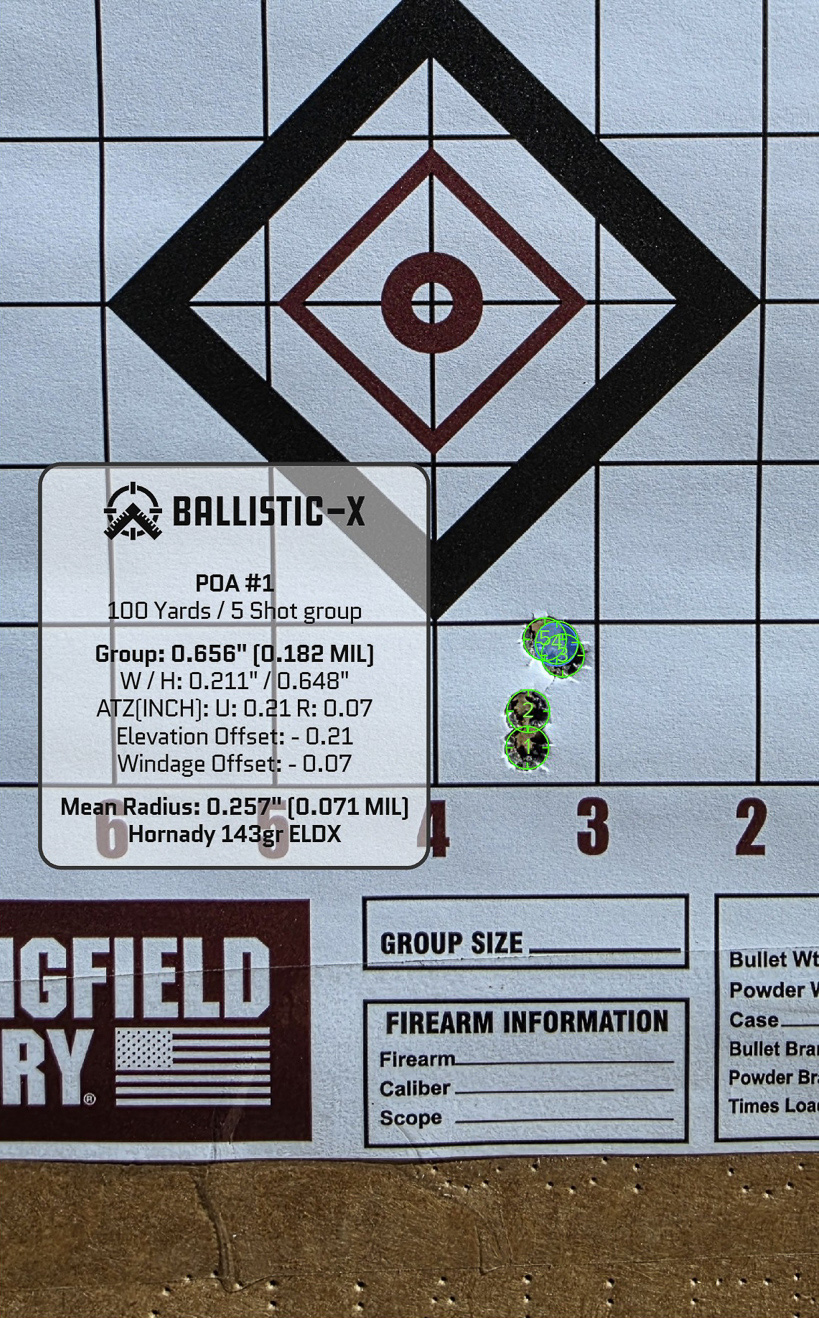
The Hornady ELD Match resulted in a total five-shot group size of .925″ according to Ballisic-X. But the real shock was when I was viewing basically one hole for all four subsequent shots. If we remove the cold bore shot, our core group size is .221″. This is pretty amazing. Well, this core four-shot grouping was sub ¼”. This is my personal best-ever grouping with any rifle of any caliber. And this is well below the .75 MOA guarantee from Springfield Armory for a three-shot group. Color me impressed!
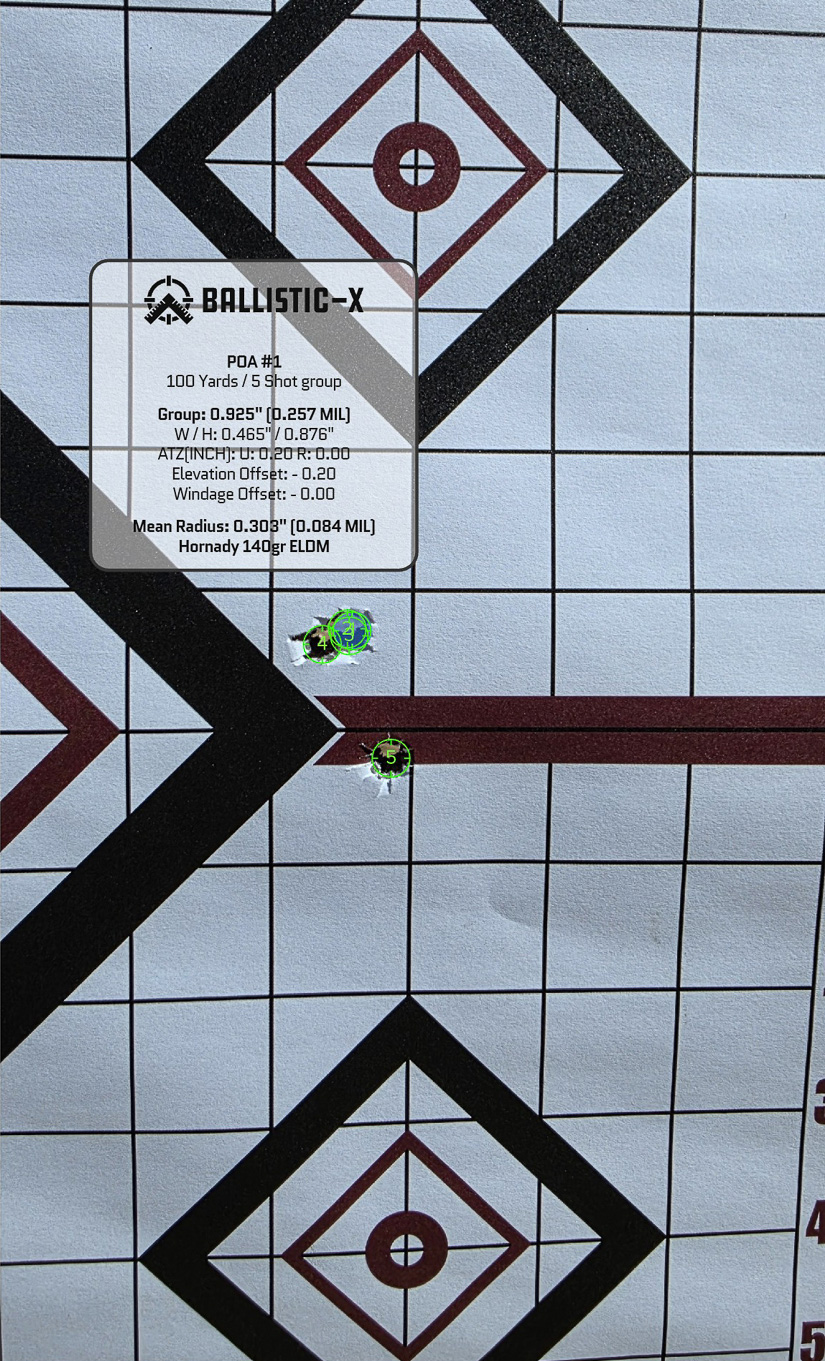
I then moved on to the Hornady 143-gr. ELD-X Precision Hunter. I had high hopes for this ammo because I personally use it for my hunts. According to Ballistic-X, the five-shot group — including the cold bore — was .656″. Again, this was beating out the .75 MOA guarantee for three shots. When the cold bore is removed, we get a core group of .450″. But why is the core group the most important? Well, the core group shows you the consistency of the rifle — basically, how it’s going to perform shot after shot. We all know the cold bore is going to be slightly off zero, especially when a suppressor is added. So, you need to know it. However, the core group tells the real story of how the rifle will perform.
Drive the Performance Home
After my initial groups I could not wait to stretch the legs on this rifle. I had targets available out to 500 yards on the day of testing consisting of 10” plates. I had already mounted a Blackout Defense Arca-Swiss plate on the M-Lok rail. Now it was time to get out the BOG DeathGrip tripod and go to work with some fairly aggressive angle shooting.
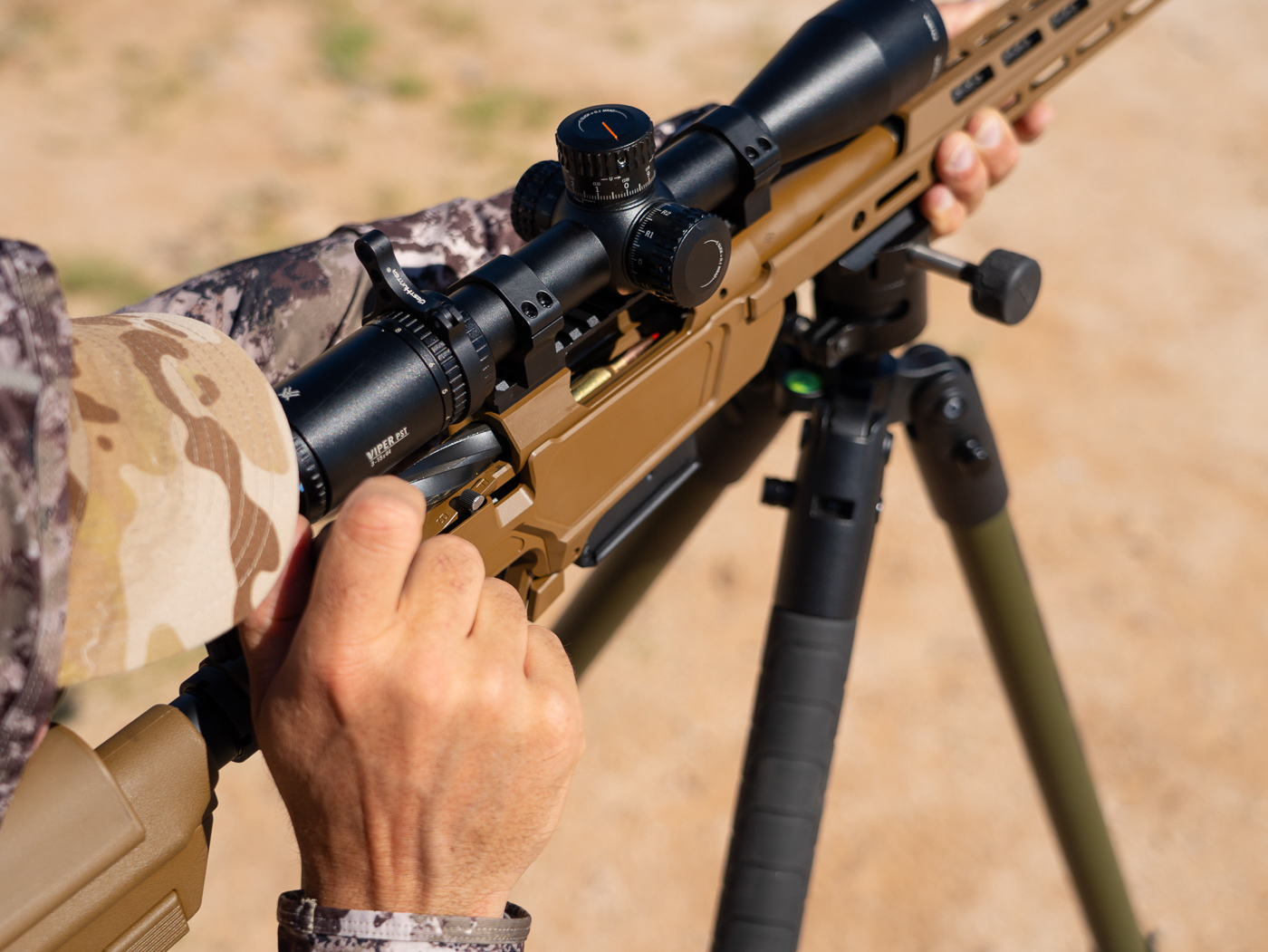
The plates were no match for this rifle. I had my range card built with the help of Applied Ballistics and went to work getting first round impacts on every plate out to 500 with both Hornady ammo types. Since I was shooing up against a mountain that surrounds the range, the report of the impacts were so satisfying.
Ultimately, I was extremely impressed with this rifle. I am by no means a top-level precision shooter. But I know performance when I see and feel it on the range. In my opinion, the performance of the Model 2020 Heatseeker 20” is plainly obvious. And when you feed it the right ammo like the Hornady I did, you will see and feel it too.
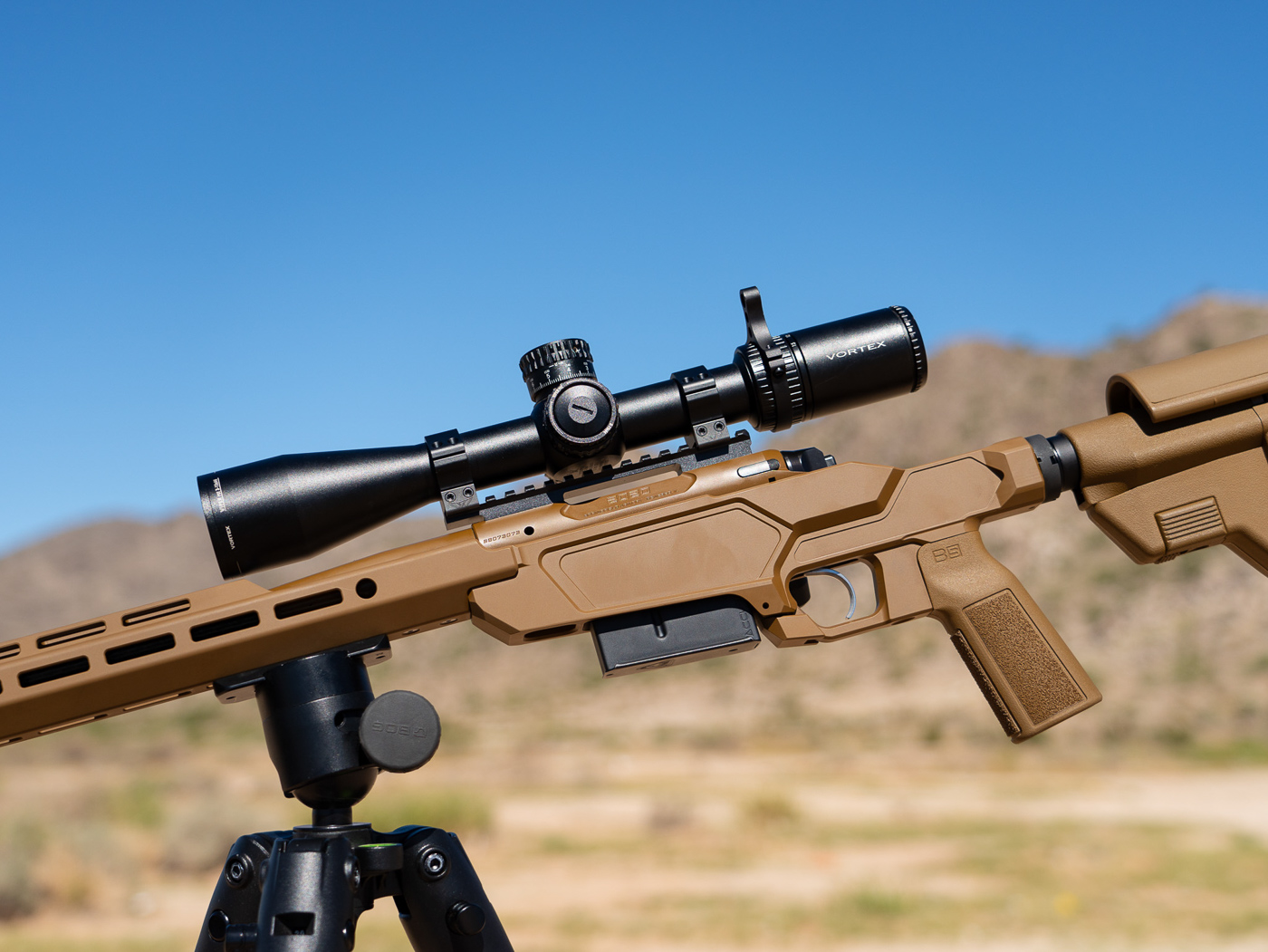
If you are thinking about cost factors, the MSRP of all the Model 2020 Heatseekers is $2,355 as a complete rifle. Most of the popular custom precision barreled actions are on average well over $2,000. So, you are not only getting amazing performance you are getting that performance in a complete rifle package at a very good price point. I’m sold!
Editor’s Note: Please be sure to check out The Armory Life Forum, where you can comment about our daily articles, as well as just talk guns and gear. Click the “Go To Forum Thread” link below to jump in and discuss this article and much more!
Join the Discussion
Featured in this video
Read the full article here




